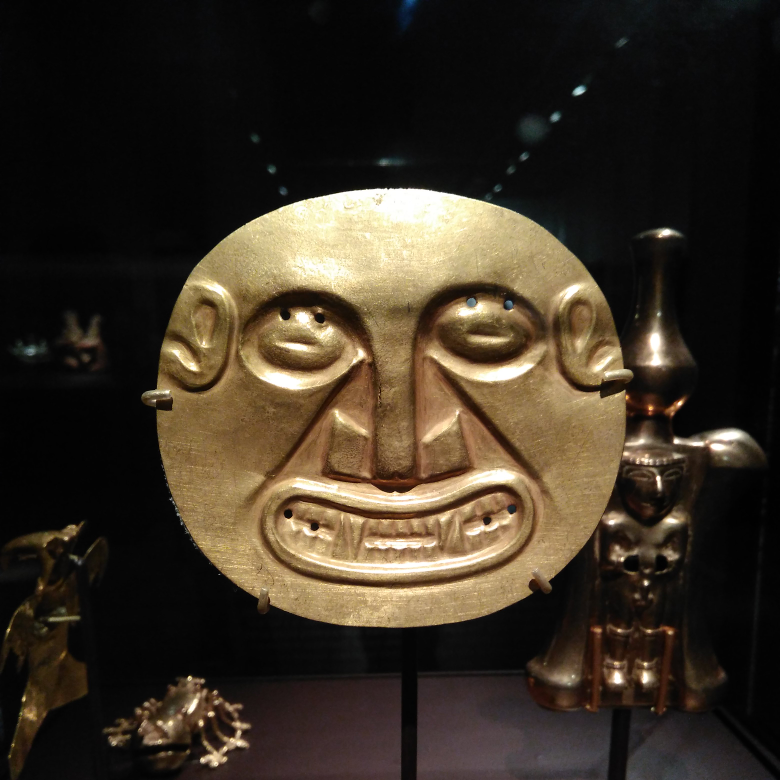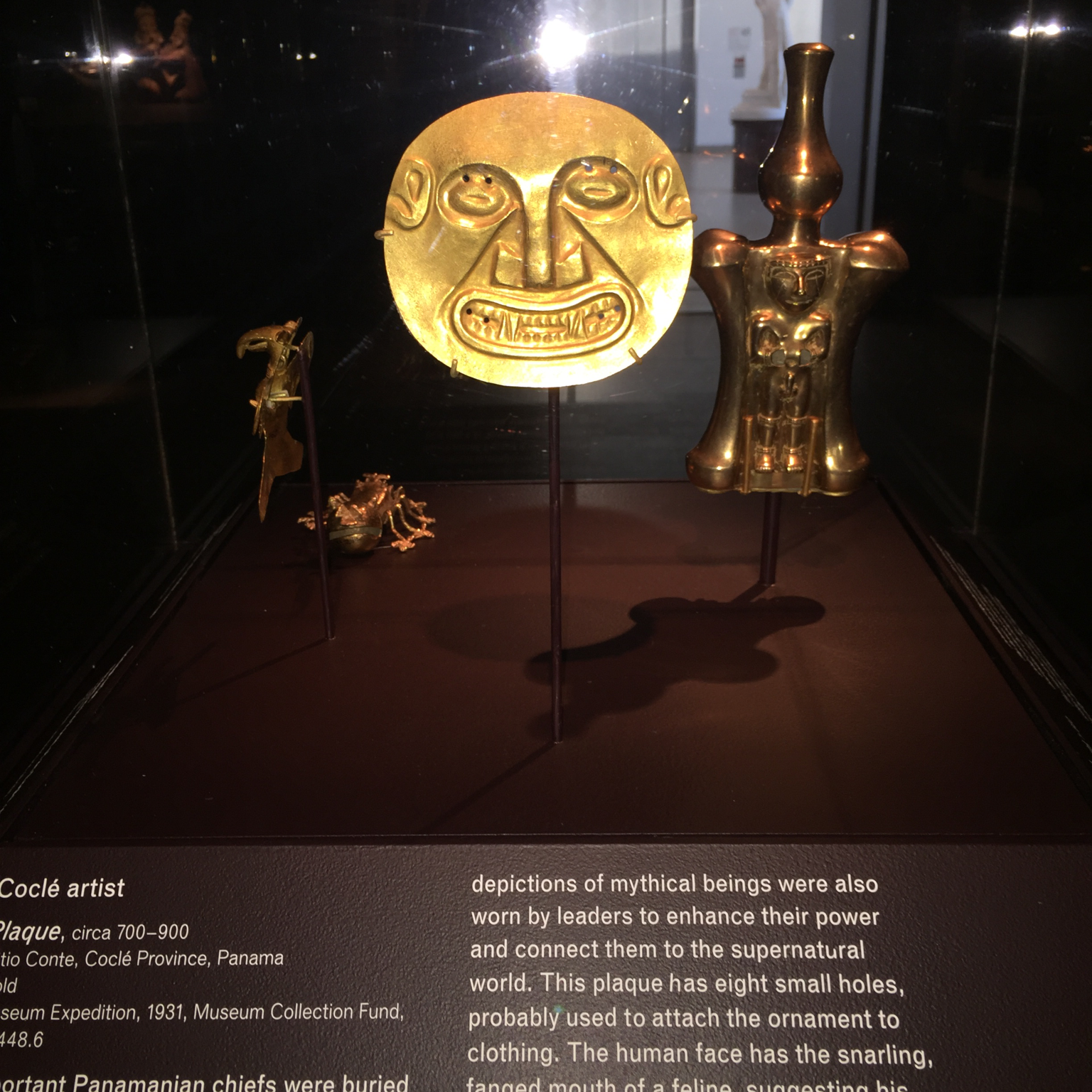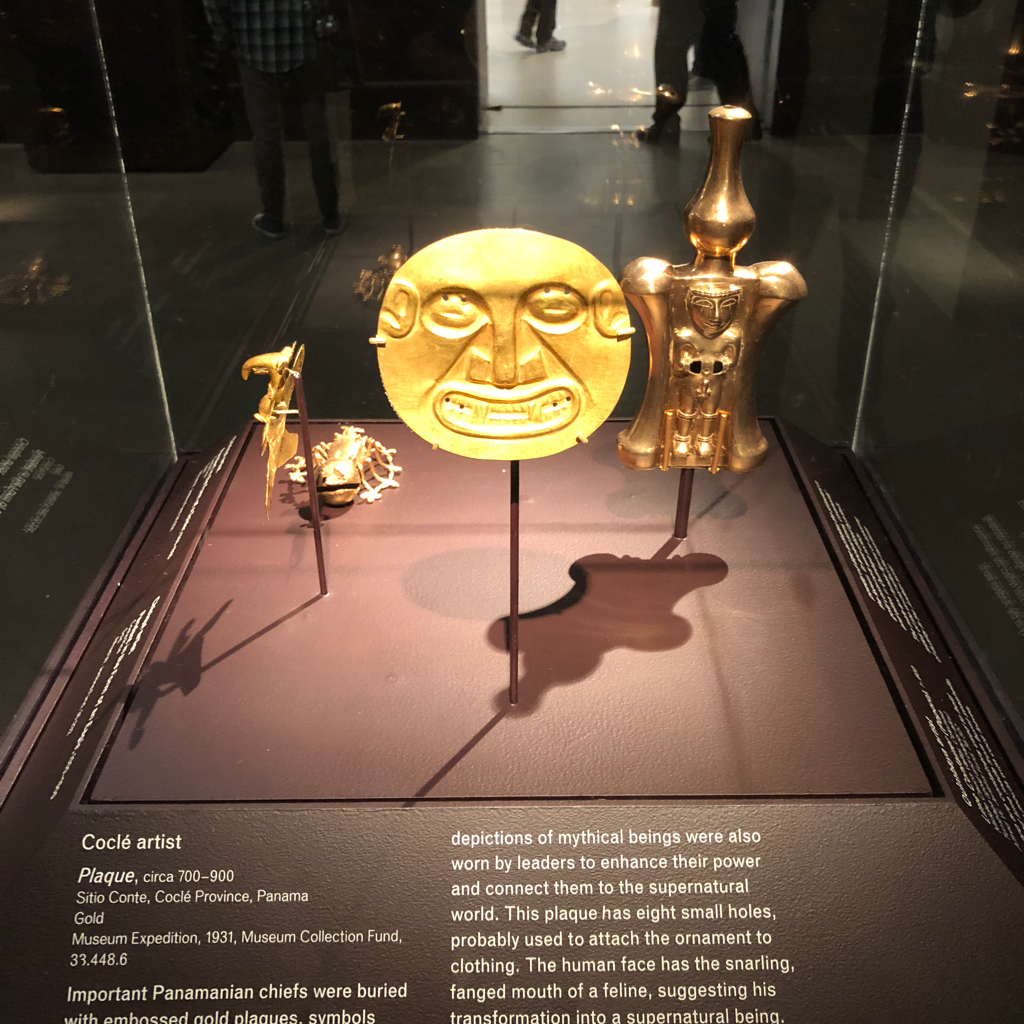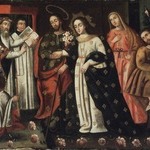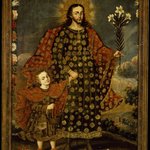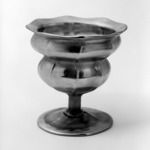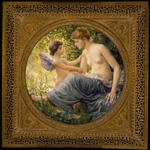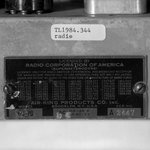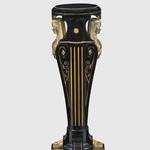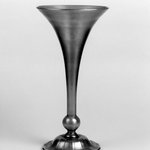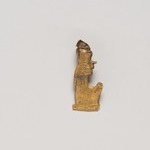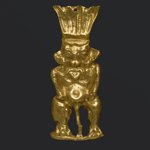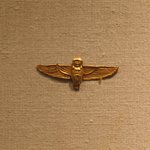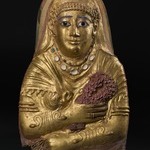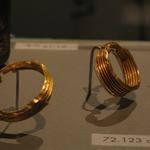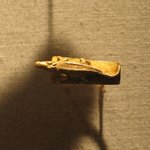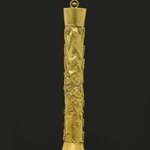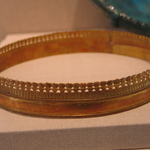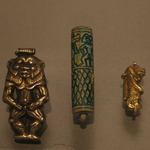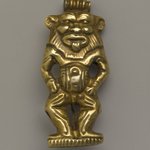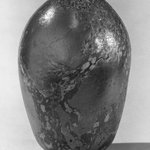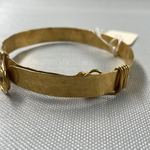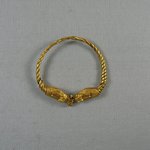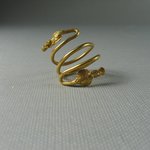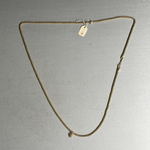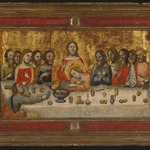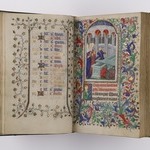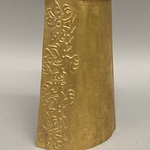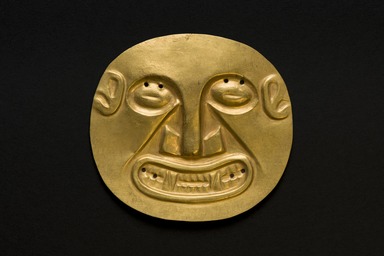
Embossed Disk
Arts of the Americas
Important Panamanian chiefs were buried with embossed gold plaques, symbols of power and status. Gold plaques with depictions of mythical beings were also worn by leaders to enhance their power and connect them to the supernatural world. This plaque has eight small holes, probably used to attach the ornament to clothing. The human face has the snarling, fanged mouth of a feline, suggesting his transformation into a supernatural being.
CULTURE
Coclé
MEDIUM
Gold
DATES
ca. 700–1100
DIMENSIONS
4 x 4 in. (10.2 x 10.2 cm) (show scale)



COLLECTIONS
Arts of the Americas
ACCESSION NUMBER
33.448.6
CREDIT LINE
Museum Expedition 1931, Museum Collection Fund
PROVENANCE
Possibly from grave 32, Sitio Conte, Panama; 1931, excavated by the Peabody Museum of Archaeology and Ethnology, Cambridge, MA; December 1, 1933, purchased from the Peabody Museum of Archaeology and Ethnology by the Brooklyn Museum.
Provenance FAQ
CATALOGUE DESCRIPTION
Embossed gold plaque with human face and the snarling, fanged mouth of a feline. The plaque has eight small holes that were likely used to attach the ornament to clothing.
Condition: good.
EXHIBITIONS
MUSEUM LOCATION
This item is not on view
CAPTION
Coclé. Embossed Disk, ca. 700–1100. Gold, 4 x 4 in. (10.2 x 10.2 cm). Brooklyn Museum, Museum Expedition 1931, Museum Collection Fund, 33.448.6. Creative Commons-BY (Photo: Brooklyn Museum, 33.448.6_PS22.jpg)
IMAGE
overall, 33.448.6_PS22.jpg. Brooklyn Museum photograph, 2024
"CUR" at the beginning of an image file name means that the image was created by a curatorial staff member. These study images may be digital point-and-shoot photographs, when we don\'t yet have high-quality studio photography, or they may be scans of older negatives, slides, or photographic prints, providing historical documentation of the object.
RIGHTS STATEMENT
Creative Commons-BY
You may download and use Brooklyn Museum images of this three-dimensional work in accordance with a Creative Commons license. Fair use, as understood under the United States Copyright Act, may also apply.
Please include caption information from this page and credit the Brooklyn Museum. If you need a high resolution file, please fill out our online application form (charges apply).
For further information about copyright, we recommend resources at the United States Library of Congress, Cornell University, Copyright and Cultural Institutions: Guidelines for U.S. Libraries, Archives, and Museums, and Copyright Watch.
For more information about the Museum's rights project, including how rights types are assigned, please see our blog posts on copyright.
If you have any information regarding this work and rights to it, please contact copyright@brooklynmuseum.org.
RECORD COMPLETENESS
Not every record you will find here is complete. More information is available for some works than for others, and some entries have been updated more recently. Records are frequently reviewed and revised, and we welcome any additional information you might have.



